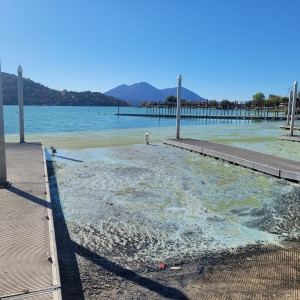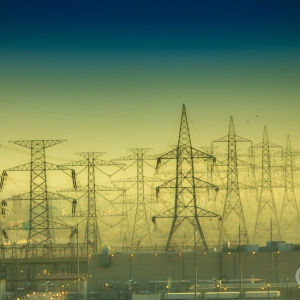The Stream, September 22, 2021: Water in the Largest U.S. Freshwater Aquifer Is Depleting Faster Than Ever Before
YOUR GLOBAL RUNDOWN
- If passed, a major infrastructure package in the United States could help clean up decades of water pollution at abandoned coal mines.
- The UAE announces three major desalination projects aimed at meeting water security goals.
- High costs for fishing are impeding the way of life of Zimbabwe’s ‘great river people.’
- Drinking water reservoirs in Mumbai are near capacity.
In the U.S. southern plains, water in the Ogallala aquifer is depleting at record rates.
“We wasted the hell out of the water.” – Tim Black, a cattle farmer in the Texas Panhandle. Water is disappearing from the Ogallala aquifer in Texas, threatening the livelihoods of farmers who have relied on the region’s groundwater for generations. The Associated Press reports that aquifers in the High Plains region are depleting faster than anywhere else. If water in those aquifers runs out, it could be gone for hundreds if not thousands of years, affecting other agricultural industries, small businesses, land values and community tax bases. To put off worst-scenario outcomes, some farmers are growing crops that require less water, investing in more efficient irrigation systems, or replacing cash crops with livestock and pastureland.
- Why it matters: With rainfall totals less than half of normal at best and just 10 percent of normal in the worst areas, Circle of Blue reported in 2014 that farmers were leaning on water from the Ogallala aquifer more than ever before. Bob Zimmer, a farmer and board member for the North Plains Groundwater Conservation District, said area farmers were taking drastic measures to keep their livelihoods afloat. For the southern plains, that means tapping groundwater. The region relies on rainwater and water from the Ogallala to irrigate their crops. In dry years, farmers draw on banked savings from the aquifer, thus accelerating the annual pumping rate.
IN RECENT WATER NEWS
In Case You Missed It:
The Town that Flood-Proofed Itself – Ottawa, Illinois learned how to keep its residents out of harm’s way. But on the river’s edge, safety has often required sacrifice.
What’s Up With Water – September 20, 2020 – This week’s episode covers another deadly year for environmental activists, an Indigenous community in Canada celebrating the arrival of clean drinking water, and the risk of flooding throughout the United States.
U.S. Infrastructure Package Could Clean Up Abandoned Coal Mines
A massive infrastructure bill, which has been passed through the U.S. Senate, includes $11.3 billion for the cleanup of defunct coal mines. Thousands of abandoned coal mines have been polluting rivers and streams for decades, in some places harming fish and contaminating drinking water, according to the Associated Press. If the bill passes, it could be bring along “historic advancement in mine reclamation,” Eric Dixon, a research fellow at the Ohio River Valley Institute, told the AP. This is especially true along the Appalachian Mountains and in clusters dotting the Midwest and the Rocky Mountains, where sites can clog rivers with debris or pollute streams with harmful discharge.
TODAY’S TOP WATER STORIES, TOLD IN NUMBERS
3 DESALINATION PROJECTS
The UAE announced three new water desalination projects in Abu Dhabi, Dubai and Umm Al Quwain to address water security needs and increase sustainability. The projects are set to be completed by 2023, and will produce a combined 420 million imperial gallons of water per day, The National News reports.
- Why it matters: Desalination is commonly seen as a steady, though energy-hungry and costly, means of satisfying freshwater demands in dry countries. It produces drinkable water by stripping out salts, mostly from sea water but also from brackish groundwater. The salts, however, do not disappear. They are instead concentrated in hyper-saline brine. A 2019 paper from a United Nations think tank found that the amount of brine generated by the world’s nearly 16,000 desalination plants is 50 percent larger than earlier assumptions. Desalination brine, which can be laden with residual chemicals from the treatment process as well as excess heat, is damaging to the marine environment. Most coastal desalination facilities discharge their waste back into the ocean.
$2000 FINE
Zimbabwe’s Batonga tribe, who traditionally made a living fishing along the Zambezi River and Lake Kariba, say they are being cut off from their way of life by expensive permits and national fishing industry regulations. According to Al Jazeera, fishing permits can cost up to $1,200 a year—plus thousands of dollars to build a fishing rig that meets government regulations. Those caught without a permit can be fined $2,000 and have their boat confiscated. Civic society groups have raised concerns about the permits, calling on the government to relax licensing processes to accommodate more Botonga fishermen.
ON THE RADAR
Mumbai residents are unlikely to face water cuts for the remainder of the year, the Hindustan Times reports. Drinking water supplies in Mumbai’s seven major reservoirs are 99.2 percent full, which officials say is enough to meet the city’s water supply requirements.
Jane is a Communications Associate for Circle of Blue. She writes The Stream and has covered domestic and international water issues for Circle of Blue. She is a recent graduate of Grand Valley State University, where she studied Multimedia Journalism and Women, Gender and Sexuality Studies. During her time at Grand Valley, she was the host of the Community Service Learning Center podcast Be the Change. Currently based in Grand Rapids, Michigan, Jane enjoys listening to music, reading and spending time outdoors.







Leave a Reply
Want to join the discussion?Feel free to contribute!